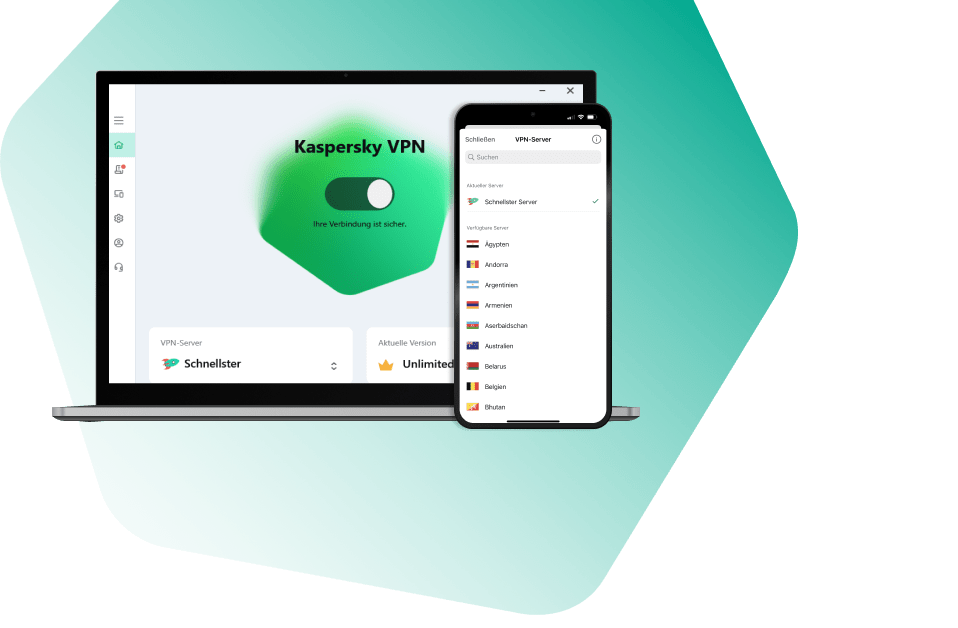Overview
- What's new in this club
-
Tatanimar joined the club
-
svc_kms joined the club
-
 Egor Erastov joined the club
Egor Erastov joined the club -
 Mehedi Hasan Mahib joined the club
Mehedi Hasan Mahib joined the club -
Which KES/KSWS detections generate Incident cards [EDR Optimum]
svc_kms posted a blog entry in Kaspersky EDR Optimum's Kaspersky EDR Optimum
You may wonder which product detection should create incident card, and which should not. Here's the answer. Product Component KES WebAV, MailAV, OAS/ODS, SystemWatcher, HIPS KSWS OAS, ODS, TrafficSecurity KSV LA WebAV, MailAV, OAS/ODS, SystemWatcher, HIPS KESL File Threat Protection, Web Threat Protection, Behavior Detection -
 Demiad joined the club
Demiad joined the club -
 Vimaro joined the club
Vimaro joined the club -
Correct integration/installation [EDR Optimum]
jypsac commented on svc_kms's blog entry in Kaspersky EDR Optimum's Kaspersky EDR Optimum
integración de sandbox al EDRO altera la data registrada en la plataforma on premis -
Correct integration/installation [EDR Optimum]
svc_kms posted a blog entry in Kaspersky EDR Optimum's Kaspersky EDR Optimum
This article will help you to check EDRO component correct installation and integration. What you need to know about EDRO 1 EDRO working with KES 11.7+, KSWS 11.0.1 and KSV LA 5.2 (Windows only), so called EPP https://support.kaspersky.com/KEDR_Optimum/2.3/en-US/216855.htm 2 You must use NWC for EDRO 3 You can't use only KEA for EDRO scenario. It always integrates with EPP. How to check that EDRO component installed correctly First of all you need to check whether KEA component was installed or not. And if it's installed then was it integrated with EPP. KES Starting with KES 11.7 EDRO agent is integrated in the KES. First of all, check component status in MMC or NWC MMC NWC If you see Not supported by license, pay attention to the version. If you see 0.0.0.0 or N/A, it means that component is not installed. Not supported by license doesn't mean that there is no license for EDRO, it may mean that component is not installed on the host. When component is installed but not activated, you'll see installed component version: MMC NWC If component was installed and was not activated, it will look like this in the KES GUI: If component is not installed, then there will be no Detection and Response section in the KES GUI (in case MDR is installed, then there will be section Detection and Response, but there will be no Endpoint Detection and Response Optimum like you see above). How to check EDRO license in the KES UI You can check license components in the KES GUI. If there is no Optimum word, license do not support EDRO. For example: And there's an example when license key supports EDRO: KSWS During KSWS installation you must enable Endpoint Agent, even if KEA was already installed on the host. KSWS detects it and enables connector with existing KEA (KEA will not be reinstalled). This is how correctly installed KSWS + KES looks like in the MMC: And if it not installed: KSV LA There is no change components task. You can change them only during the upgrade or installation. Reinstallation requires reboot. During installation you need to choose Custom installation and enable integration with KEA Remember that you can enable integration in the installation package properties in the KSC. How to check NWC setup for EDRO What to do if there is no Alerts section in the NWC. How it looks If there is no Alerts section in the WEB UI Go to the settings: And enable EDR alerts: In the KSC NWC there will be EDRO plugin by default. It installs with the console. So the only way to reinstall it - reinstall NWC. How detection looks without installed EDRO component If you see detection but without enriched information, you'll see it like this: In the Enrichment and response section you'll see only Basic. It means where was a detection but no additional information about it was collected. Main reason why this may happen is that there's no EDRO component on the host. -
Preparing data to display. Please, wait... [EDR Optimum]
svc_kms posted a blog entry in Kaspersky EDR Optimum's Kaspersky EDR Optimum
Problem Using EDR, you may encounter an issue where you're unable to view incident card regarding a detection in KSC Web Console. It looks like this: Here we will discuss known causes of such behavior (several products are involved, so causes may be different). Possible causes and solutions MDR In MDR, incidents are to be viewed using the dedicated MDR Console, and KSC version 13 and newer with configured MDR plug-in. KSC 12.* Web Console will not receive the data; this is expected behavior. KES+KEA If you first install KES without EA component, and then a standalone KEA package, KES EDRO integration will be disabled and killchain will not work. Here is a quick way to determine if KEA was installed as a component of KES. Open regedit, then navigate to: [HKEY_LOCAL_MACHINE\SOFTWARE\WOW6432Node\KasperskyLab\protected\KES\Installer\features] "AntiAPTFeature" = "1" If the value is 0, proceed to the workaround to enable the component as described below. To fix this, we ran Change application components task on the host, enabling Endpoint Agent in KES. If KES/KEA integration is configured correctly, we can find the following in KES traces: 12:08:37.426 0x2a18 INF edr_etw Start processing detect = http://www.virusanalyst.com/eicar.zip//eicar/eicar.com, recordId = 6, taskId = 1128, result = 0 12:08:37.426 0x2a18 INF edr_etw Start processing actions = http://www.virusanalyst.com/eicar.zip//eicar/eicar.com, action = 4, recordId = 6, taskId = 1128, edrAction = 3489660999, result = 0 12:08:37.442 0x2a18 INF edr_etw Killchain is enabled! 12:08:37.442 0x2a18 INF edr_etw SystemWatcher is running! 12:08:37.442 0x2a18 INF edr_etw product::component::edr::`anonymous-namespace'::IsSystemWatcherDetect begin 12:08:37.442 0x2a18 INF edr_etw product::component::edr::`anonymous-namespace'::IsSystemWatcherDetect end 12:08:37.442 0x2a18 INF edr_etw product::component::edr::`anonymous-namespace'::InvestigateProcessIds begin 12:08:37.442 0x2a18 INF edr_etw product::component::edr::`anonymous-namespace'::InvestigateProcessIds end 12:08:37.442 0x2a18 INF edr_etw Finish processing detect = http://www.virusanalyst.com/eicar.zip//eicar/eicar.com threat status = 1, recordId = 6, taskId = 1128,result = 0 12:08:37.458 0x1f18 INF edr_etw Finish processing AV detect result = 0 Searching for ThreatID in KEA traces: 12:08:37.426 0x2a18 INF amfcd ThreatsProcessingEventsLogic::OnTreatActionImpl: ctx:0x23d68510 [TI 0x1b8dd490: id = 0x6, : tdid = {7F620459-6C51-9E46-9A5D-689A9B0D0098}, name = http://www.virusanalyst.com/eicar.zip//eicar/eicar.com, add info: <none>, 0x0] 0x4 0x0 KES+KEA (upgrade from KESB to EDR Optimum) EDR Optimum requires KSC 12.1 or newer to work. This includes the Network Agent, which is a part of KSC, and is generally installed on the host alongside KES. Using an outdated version of Network Agent (10.5, 11, etc.) will lead to the mentioned error when opening incident cards. If Network Agents were not upgraded along KSC, it's better upgrading them for EDR Optimum. KES 11.7+ Check that EDR Optimum feature is enabled in registry (GSI > Registry > HKLM_Software_Wow6432Node_KasperskyLab.reg.txt ). [HKEY_LOCAL_MACHINE\SOFTWARE\WOW6432Node\KasperskyLab\protected\KES\Installer\features] EdrOptimumFeature = 1 If value is 0, run Change application components task on the host, enabling EDR Optimum in KES. Also in traces (*.SRV.log) you can search for sentence bundles::InstalledFeaturesProvider::InstalledFeaturesProvider and check that EDROptimumFeature is there, for instance in example below such component is missing KES.21.9.6.465_05.18_14.00_3952.SRV.log 11:00:36.897 0x26a0 INF bundles::InstalledFeaturesProvider::InstalledFeaturesProvider{ 3 (AVScannerAndCoreFeature) 28 (AdaptiveAnomaliesControlFeature) 0 (AdminKitConnectorFeature) 24 (AdvancedThreatProtectionFeature) 27 (AmsiFeature) 7 (ApplicationControlFeature) 17 (BehaviorDetectionFeature) 30 (CloudControlFeature) 4 (CriticalScanTask) 6 (DeviceControlFeature) 23 (EssentialThreatProtectionFeature) 11 (ExploitPreventionFeature) 8 (FileThreatProtectionFeature) 19 (FirewallFeature) 5 (FullScanTask) 2 (HostIntrusionPreventionFeature) 16 (MailThreatProtectionFeature) 14 (NetworkThreatProtectionFeature) 12 (RemediationEngineFeature) 25 (SecurityControlsFeature) 18 (UpdaterTask) 21 (WebControlFeature) 20 (WebThreatProtectionFeature) 22 (WholeProductFeature) } KSWS+KEA The same rule applies: KEA component needs to be installed in KSWS. KSWS does not have a "Change application components" task in KSC, so this has to be taken into account during KSWS deployment. Here is a quick way to determine if KEA was installed as a component of KSWS. Open regedit, then navigate to: [HKEY_LOCAL_MACHINE\Software\Wow6432Node\KasperskyLab\\WSEE\11.0\Install] "Features"="AntiCryptorNAS=0;AntiCryptor=0;AntiExploit=0;AppCtrl=0;AVProtection=0;DevCtrl=0;Fim=0;Firewall=0;ICAPProt=0;IDS=0;Ksn=0;LogInspector=0;Oas=0;Ods=0;RamDisk=0;RPCProt=0;ScriptChecker=0;Soyuz=0;WebGW=0" (Soyuz needs to be set to 1) If Soyuz is set to 0, apply workaround to enable it. KSWS allows to change its components locally or via cli. Here is the example of how to set Soyuz=1 when KEA was installed not as a component of KSWS: 1. Locate ks4ws_x64.msi or ks4ws.msi (depends on OS architecture) 2. Create custom installation package based on ks4ws_x64.msi or ks4ws.msi from p.1 with parameters as per screenshot (add UNLOCK_PASSWORD= if KSWS is protected by password in policy) 3. Deploy package on problematic servers with KSWS and KEA, then check registry that Soyuz=1 4. Check host's properties at KSC side - EDRO should be in Running state in KEA If KSWS/KEA integration is configured correctly, we can find the following in KSWS traces: 19:57:04.577 7a8 1310 info [edr] Published ThreadDetected: VerdictName : HEUR:Win32.Generic.Suspicious.Access RecordId : 0 DatabaseTime : 18446744073709551615 ThreatId : {ffb58079-6d8d-4a62-8ab0-021ff4ed61c5} IsSilent : false Technology : 3489661023 ProcessingMode : 3489660948 ObjectType : 3489660934 ObjectName : C:\Windows\System32\wbem\WmiPrvSE.exe Md5 : e1bce838cd2695999ab34215bf94b501 Sha256 : 1d7b11c9deddad4f77e5b7f01dddda04f3747e512e0aa23d39e4226854d26ca2 UniquepProcessId: 0xf7c807730e051a0d NativePid : 3360 CommandLine : AmsiScanType : AmsiScanBlob : FileCreationTime: 1601-01-06T23:09:56.075520800Z Searching for ThreatID in KEA traces: 19:57:05.583 704 9b0 debug [bl] ThreatsHandler: detect v2 verdictName: HEUR:Win32.Generic.Suspicious.Access detectTechnology: 0xd000005f processingMode: 0xd0000014 objectType: 0xd0000006 objectName: C:\Windows\System32\wbem\WmiPrvSE.exe nativePid: 3360 uniquePid: 17854528913448180237 nativePidTelemetry: 3360 uniquePidTelemetry: 17854528913448180237 downloaderUniqueFileId: <none> downloadUrl: <none> isSilentDetect: false threatId: ffb58079-6d8d-4a62-8ab0-021ff4ed61c5 19:57:05.583 704 650 info [evtstt] NetworkConnectionHandler statistics: queueSize=0, received=59675, processed=59675, dropped=0, queueBytes=191 19:57:05.583 704 650 info [evtstt] NetworkConnectionHandler statistics: queueSize=0, received=59676, processed=59676, dropped=0, queueBytes=132 19:57:05.583 704 650 info [evtstt] NetworkConnectionHandler statistics: queueSize=0, received=59677, processed=59677, dropped=0, queueBytes=371 19:57:05.583 704 9b0 debug [bl] Threats Handler: event processed, id = 2 19:57:05.584 704 1fc debug [killchain] Message discarded: name = ThreatDetect The verdict is Message discarded, this means the detection won't trigger killchain generation. No such entries can be found in traces, which might mean that EPP integration is not configured correctly (EDR component is disabled in KSWS). Check killchain presence on the host If all pre-requisites are met, it's worth checking if killchain files are actually created on the host. To check that, run cmd.exe as Administrator and check the c:\ProgramData\Kaspersky Lab\Endpoint Agent\4.0\Data\killchain\detects folder contents. Archives with <threat_id>.zip names should be present in the folder: C:\WINDOWS\system32>dir "c:\ProgramData\Kaspersky Lab\Endpoint Agent\4.0\Data\killchain\detects" Volume in drive C has no label. Volume Serial Number is 8010-ADC0 Directory of c:\ProgramData\Kaspersky Lab\Endpoint Agent\4.0\Data\killchain\detects 08/16/2021 12:20 PM <DIR> . 08/16/2021 12:20 PM <DIR> .. 08/16/2021 09:34 AM 636 0349c190-4ac3-4da4-9b64-07835298660f.zip //this is an archive with killchain info 08/16/2021 12:18 PM 696 1d306aa7-f37f-4ab2-969e-d337d398a995.zip 08/16/2021 09:34 AM 637 23a5dc93-5776-43c8-b949-79c102aa1184.zip 08/16/2021 12:19 PM 691 27bc9ea3-200b-49d2-b8b0-df7954cd428a.zip 08/16/2021 12:19 PM 683 40673c70-9e8e-420f-b5ce-65b406862b94.zip 08/16/2021 12:19 PM 688 590b6e30-4509-4b25-bdb0-062f89b7e062.zip 08/16/2021 12:20 PM 693 67993612-dc82-45a2-9e5b-74756adc46eb.zip 08/16/2021 12:20 PM 685 6a892bd1-f452-42d0-80b0-cb953cd7fc26.zip 08/16/2021 12:19 PM 686 a63fbafa-fcef-46f7-935f-42be4392a172.zip 08/16/2021 12:19 PM 699 d9d4f5eb-42b2-4460-8f8a-eb63bbef8791.zip 08/16/2021 12:19 PM 686 f6042624-9840-4a6e-9b30-9270cce22236.zip 11 File(s) 7,480 bytes 2 Dir(s) 240,763,092,992 bytes free

Kaspersky Plus
Güvenlik. Performans. Gizlilik. Hepsi kullanımı kolay tek bir uygulamada.

Kaspersky Small Office Security
Küçük ölçekli işletmenizi kolayca koruyun

Kaspersky Password Manager
Parolalarınız ve belgeleriniz her zaman elinizin altında

Kaspersky Small Office Security
Unkomplizierter Schutz für kleine Unternehmen

Premiumversion
Kaspersky Safe Kids
Behalten Sie Ihre Kinder im Auge, auch wenn Sie nicht in der Nähe sind

Kaspersky VPN Secure Connection
Sicher. Privat. Außergewöhnlich schnell. So sollte Internet sein.

Kaspersky Standard
Mejora la protección con el optimizador del rendimiento del dispositivo

Kaspersky Plus
Seguridad. Rendimiento. Privacidad. Todo en una única aplicación fácil de usar.

Kaspersky Small Office Security
Proteja fácilmente su pequeña empresa

Versión premium
Kaspersky Safe Kids
Supervisa a tus hijos, incluso cuando no estés con ellos

Kaspersky Small Office Security
Protégez votre PME sans effort

Kaspersky Plus
Combina recursos de segurança, desempenho e privacidade em um aplicativo

Kaspersky Small Office Security
Proteja a sua pequena empresa sem esforço

Kaspersky Premium
Proteção completa para seus dispositivos, privacidade online e identidade

Versão Premium
Kaspersky Safe Kids
Fique de olho nas crianças, mesmo quando não estiver por perto

Kaspersky VPN Secure Connection
Segura. Privada. Excepcionalmente rápida. Como a internet deveria ser.

Kaspersky Standard
Protezione avanzata con ottimizzazione delle prestazioni dei dispositivi

Kaspersky Small Office Security
Protezione immediata delle piccole aziende

Versione premium
Kaspersky Safe Kids
Accertati che i tuoi figli siano al sicuro, anche quando non sei con loro

Kaspersky Secure Connection
Надёжное шифрование и защита данных — даже в открытых Wi Fi сетях










